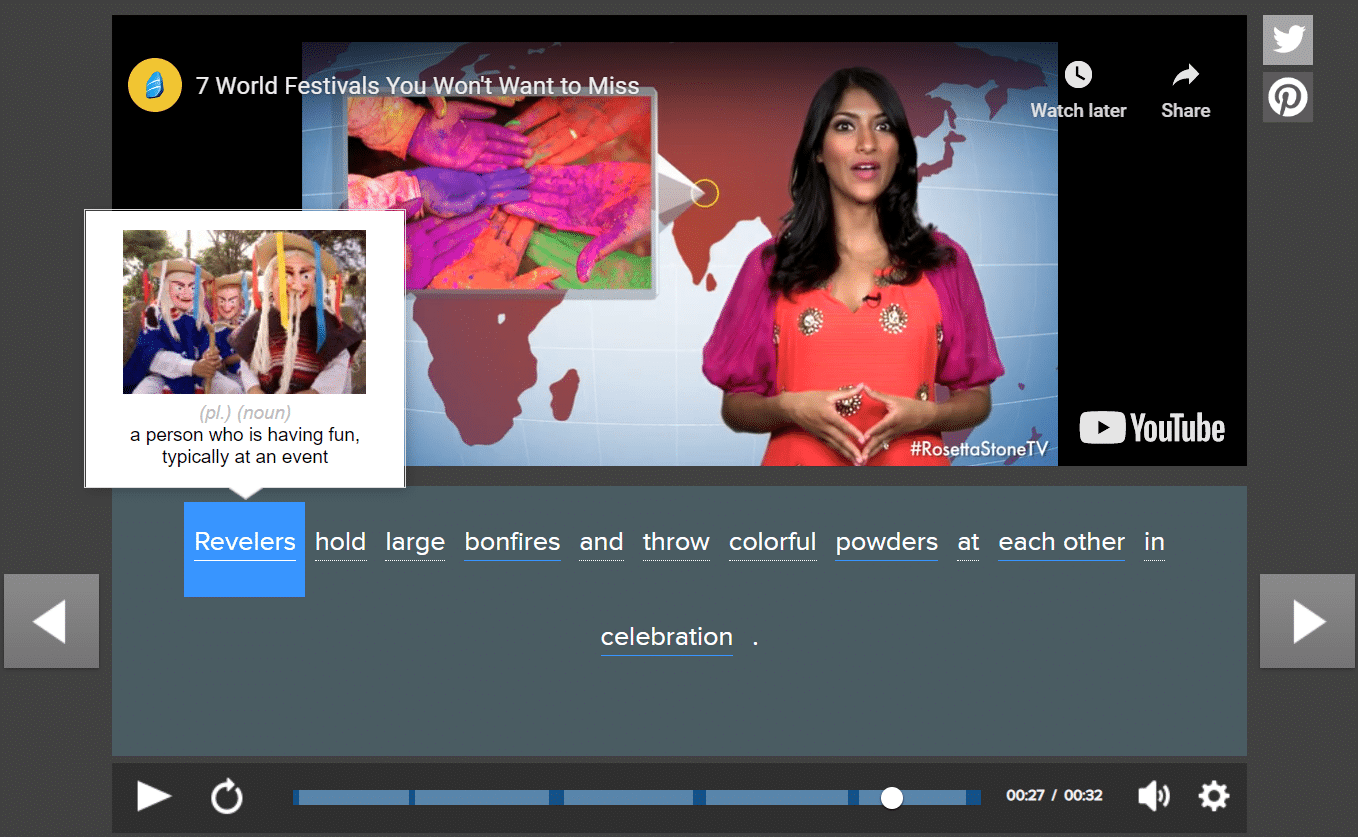
Comprehensible Input: 8 Teaching Strategies for Your ESL Classroom
Your job as an ESL teacher is to give your students the correct input. That way, you’ll get the right output—properly-learned language!
That means you need to present new ideas to your students at the most linguistically appropriate level to help them improve their English skills and understand more information.
And that’s why comprehensible input is a critical element in every ESL classroom.
Here are eight ways to include comprehensible input in your ESL curriculum!
Contents
- What Is Comprehensible Input?
- 1. Diversify the Sources of Input
- 2. Utilize a Variety of Visual Tools
- 3. Include Regular Story Time
- 4. Use Media-based Teaching Programs
- 5. Introduce Narrow Reading
- 6. Help Students Teach Each Other
- 7. Teach Songs and Nursery Rhymes
- 8. Play Games with Your Class
Download: This blog post is available as a convenient and portable PDF that you can take anywhere. Click here to get a copy. (Download)
What Is Comprehensible Input?
Comprehensible input is language that a learner can understand even if they don’t know all of the vocabulary words or grammar structures involved.
In fact, comprehensible input should be just one level above that of the language learner. If your student reads at a “Level 3,” the comprehensible reading input should be a Level 4.
It should integrate new and unknown words and structures with familiar ones so the student has enough known information to be able to interpret and comprehend the new linguistic cues.
In other words, a successful comprehensible input means that students understand most—but not all—of the given information and are challenged to expand their language knowledge. This could be in any form—audio, video or written language.
First proposed by Stephen Krashen in 1977, the idea of integrating comprehensible input into second language curriculums has received great popularity for its overall effects on ESL instruction.
Here’s how to do it.
1. Diversify the Sources of Input
Comprehensible input is more than just language development and curriculum content.
Language is a practical, flexible and living tool that assumes various purposes and forms in our lives. The input you provide to students should reflect that.
ESL teachers should emulate the various types of input that students receive on a daily basis—stories, videos, social media and beyond.
In particular, make sure to diversify input sources enough that students aren’t only getting comprehensible input from you. In class, they should also be getting input from each other.
Create opportunities for discussions and debates. Provide level-appropriate reading and listening materials. Watch videos and talk through them as a class afterward.
Review the content of your sources to ensure it is actually comprehensible. Make sure it also gives students room to explore and experiment with the English language.
2. Utilize a Variety of Visual Tools
When developing a comprehensible learning environment, both content and context are important.
Besides carefully controlling the vocabulary and discussion topic, ESL teachers should also use graphic organizers, tangible objects and other visual aids to enhance understanding.
Visual tools can help students:
- understand complex terms.
- sequence information more easily.
- connect related concepts.
- develop personal ideas.
Visual aids may be whiteboard doodles, charts or picture cut-outs. You can also label items and pictures.
Whatever you use, it should add color and energy to your ESL curriculum, enrich learning and broaden students’ understanding of new concepts.
3. Include Regular Story Time
Stories are full of possibilities and adventures. They’re exciting. They encourage our imaginations.
They’re also a great way to provide comprehensible input to your ESL students.
Stories provide context and detailed information—exactly what language learners need. And stories that will resonate with your students on a personal level will work best.
When selecting stories, make sure they are:
- Linguistically appropriate. Students should understand most of the words, terms, phrases and sentence structures. There is no overly complex plot development or characters. You should clarify special nouns, locations or other proper names in advance, including main characters.
- Related to culture. Cultural stories are interesting, broaden students’ worldview and teach them to present their personal beliefs in a respectful manner. Allow for discussions and consider holding related events, like a special cultural food day.
- Examples of good social behavior. Stories can show students how to react in certain situations. What do you say in a job interview? How do you host a holiday party, or ask someone on a date? Provide stories that increase students’ social understanding in realistic and practical ways.
Incorporating regular story time into your ESL class, whether daily or weekly, will show your students just how much they can learn from stories.
4. Use Media-based Teaching Programs
Another way to find diverse input is with FluentU.
FluentU has tons of English videos made by and for native speakers—like “Friends” episodes, “The Hunger Games” movie trailers, documentaries, broadcast news, interviews, music videos and more. The included learning tools can help ESL students understand these videos.
If a learner hears a word they don’t know, they can hover their cursor over the subtitled words to see the definitions. Clicking on a word will show example sentences and give the user the option to add the word to their own personalized vocabulary list for later practice.
As an ESL educator, you can use FluentU for in-class exercises or assign videos, audio or flashcards as homework. If the pre-made vocabulary sets aren’t quite right for your class, you can create your own.
FluentU‘s features are designed to make English input comprehensible for learners. So once you find videos your class will enjoy, you’ll be good to go.
5. Introduce Narrow Reading
Instead of reading a bunch of books, articles and essays on a variety of subjects, try narrowing it down to master just one subject.
Use materials written about the same topic by different people to practice narrow reading. Your ESL students will learn to recognize the sets of words and structures commonly used to express certain ideas.
Supplement your narrow reading exercises by incorporating related podcasts, audio programs and movies into your class. You can also encourage your students to choose a specific topic they enjoy to read about in their free time.
Narrow reading enhances comprehensible input efforts. Reading about the same subject repeatedly builds up students’ background knowledge while improving their vocabulary and semantic and syntactic understanding in the area.
6. Help Students Teach Each Other
Design activities where students help each other learn new information.
For example, you might try an activity that I call “List Work.” Students work in pairs to accomplish a multi-step task.
To play, you’ll need to:
- Create a list of instructions. For example: How to complete a craft or cooking project.
- Assign or allow students to choose partners and roles. One partner will be the Teacher, and the other will be the Student.
- Give each Teacher a copy of the instructions list. The Teacher will verbally tell the Student what to do.
To be an effective comprehensible input activity, you’ll need to include some new vocabulary, pictures and symbols in the list for the Teacher to decipher.
Keep the directions short so the Teacher will be encouraged to explain things in their own words.
7. Teach Songs and Nursery Rhymes
Homophones and words that rhyme can be a headache for ESL students.
To help your students distinguish between similar-sounding words, provide context to illustrate their usages and meanings.
Songs and nursery rhymes often involve words with similar sounds in constrained contexts. As long as you assess the vocabulary beforehand, children’s rhymes and easy songs are great sources for comprehensible input.
Plus, music can be a powerful language leaning tool for many reasons.
Through simple lines and consistent repetition, your ESL students will learn to recognize those phonologically-similar words.
8. Play Games with Your Class
Games can hold students’ attention while challenging them to understand the words involved and respond appropriately.
“Simon Says” is a fun game you can play with your ESL students.
The ESL version of Simon Says integrates the idea of comprehensible input by using vocabulary that has been recently studied and dictating a sequence of actions for students to perform.
For example:
- Simon says, “Do four things: open your notebook, write two spelling words, trade your pencils and draw a smiley face on your neighbor’s notebook.”
This asks students to undertake tasks that require interaction.
- Simon says, “Pick a color in your head and then sit next to someone who picked the same color as you.”
This requires students to communicate with each other in order to complete the task.
When students can make meaningful associations with their English lessons, they’ll come to enjoy them that much more.
And at the end of the day, promoting comprehensible input in your ESL classroom should be meaningful and fun for you and your students.
Download: This blog post is available as a convenient and portable PDF that you can take anywhere. Click here to get a copy. (Download)




